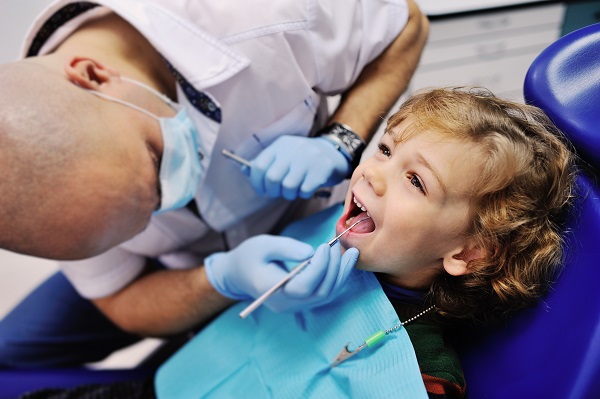What Happens during Phase 1 Orthodontics?

In phase 1 orthodontics, orthodontists treat patients between the ages of six and nine. Those patients have mixed dentition. This means patients have a mix of permanent teeth and deciduous or baby teeth. Phase 1 orthodontics addresses problems in the mixed dentition period. These are things that can result in severe overcrowding and unhealthy tooth wear. Many patients also struggle with proper dental hygiene and may worry about others teasing them.
Assessment in phase 1 orthodontics
This is an effective preventive line of care. But, not every child will benefit from phase 1 orthodontics. The orthodontist will assess the patient’s potential needs. Then the pediatric orthodontist can take proactive measures to create a better outcome. Children need these preventive methods for many reasons, including:
- misaligned teeth
- craniofacial differences
- cleft palate
Common procedures of phase 1 orthodontics
There are many reasons why a patient will need phase 1 orthodontics. But, for many of these conditions, the treatments are similar. Overcrowding — when there is not enough jaw space for the number of teeth — can cause teeth to turn or grow out misaligned. This is a common occurrence in pediatric orthodontics. In children, the jaw is sometimes too small for the number and size of teeth that are present. Permanent teeth that erupt that are much larger than deciduous teeth can also create the conditions for overcrowding. Dentists treat the issue of overcrowding in different ways, depending on the patient.
Tooth extraction involves identifying and removing teeth. These teeth may be deciduous or permanent. Their removal can create space for existing teeth or for teeth that have not yet erupted. Sometimes, a tooth is preventing a needed tooth from erupting. An orthodontist may extract one or more teeth. That way, the remaining teeth can be guided into alignment.
Orthodontists may use headgear and braces in a limited way. These tools will begin to move the teeth into alignment once the orthodontist has created space. Patients often still have a mix of teeth. So, the orthodontist places these braces only on certain teeth. Patients can get braces during phase 1 orthodontics even if they do not have any teeth extracted. Orthodontists often decide on installing braces and headgear if the patient can cooperate.
Spacers and expansion appliances hold space in the mouth after the orthodontist extracts a tooth or teeth. Spacers keep teeth from migrating into the space. Teeth that have not erupted yet are then more likely to erupt on their own without any surgical help. Once they have erupted in adolescence, the orthodontist may need to take further corrective action, but not always. The orthodontist will remove the spacer or expansion appliance when there is evidence the tooth is erupting. The orthodontist will also take them out if they must surgically expose the tooth.
Are you considering phase 1 orthodontics?
Phase 1 orthodontics can help patients prevent serious dental issues and improve appearance. It leads to a healthier long-term outcome with less surgical intervention. Orthodontists hope to avoid more intensive oral therapies and surgeries later on. The orthodontist can explore the options with the patient’s caregivers to decide on a plan of care.
Are you considering phase 1 orthodontics in the Frisco area? Get more information at http://www.pricefamilyortho.com.
Check out what others are saying about our services on Yelp: Read our Yelp reviews.
Related Posts
Is it possible to find an orthodontist in a pinch when out of state or away on business? Yes. For people who travel for business and need immediate orthodontic treatment due to an emergency, there is no reason to worry. There are several options for patients who need to find an orthodontist quickly when traveling.While…
There are several compelling reasons to find an orthodontist for fixing crooked, crowded, or misaligned teeth—and they are not all cosmetic. Yes, having a straight smile is attractive, but the benefits do not stop there. Here is a closer look at some key reasons to find an orthodontist for teeth straightening.Many dentists will offer teeth…
Maintaining a healthy lifestyle includes taking care of one’s teeth, but many people may find it difficult to find an orthodontist whose office hours and available services match a busy everyday schedule. Despite working long hours, caring for children full time, or having many daily commitments, people can still choose an orthodontist to help them…
Crowded teeth, in which too-closely spaced teeth result in overlapping, bunching, and twisting, can be both an aesthetic and a practical problem. An orthodontist may recommend several treatments to reduce crowding and improve tooth alignment.Genetics is a significant factor in whether an individual has crowded teeth. Some individuals have unusually large teeth or atypically small…
